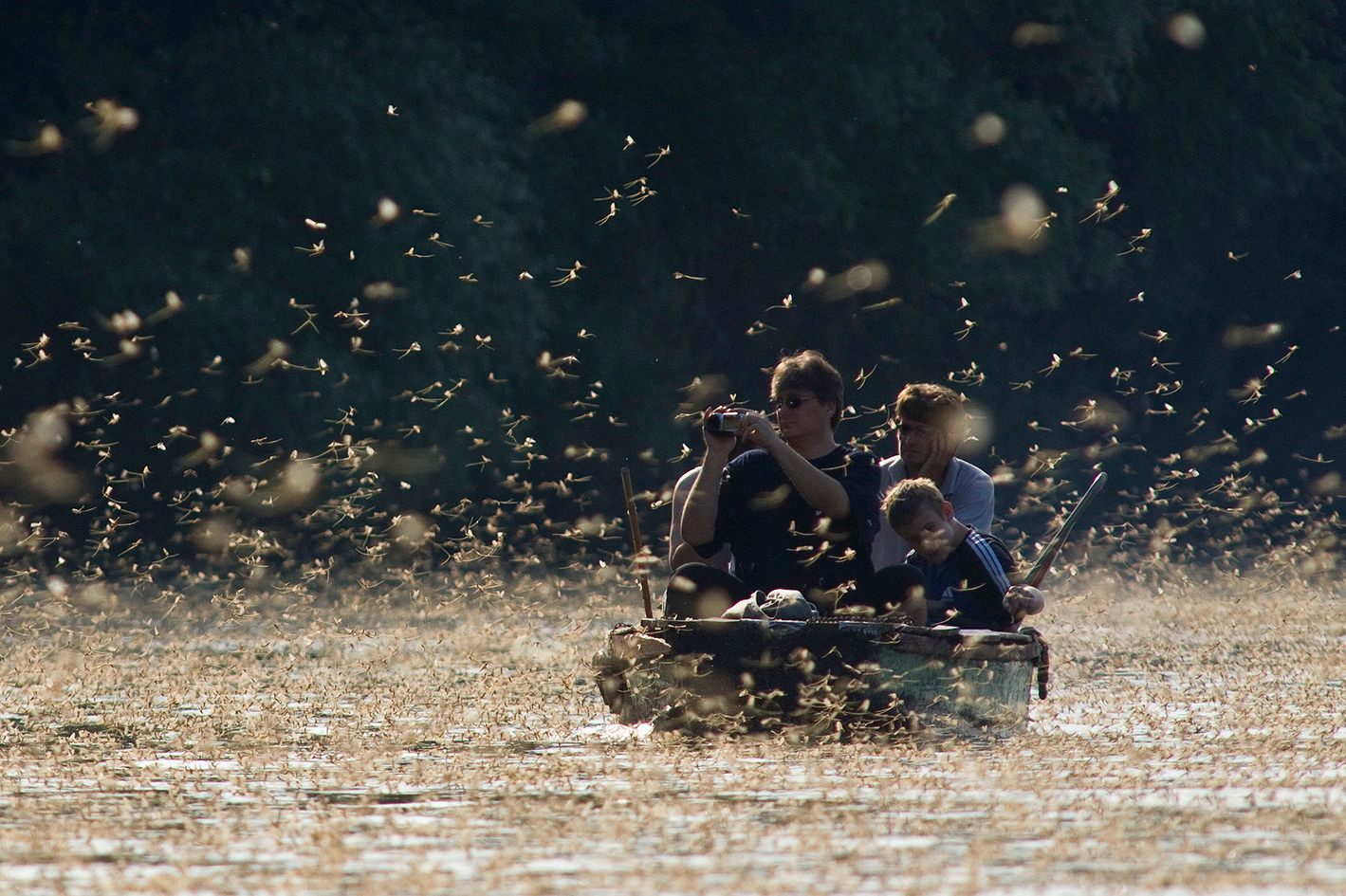Celebrate Swarm Season with Photos of Mayflies Swarming a Medieval Bridge
Springtime for insects!

The bridge over the Ebro river in Tudela, Spain—mayflies think it’s a great date spot. (Photo: The Spanish Traveller/CC BY-SA-2.0)
Around the world, the arrival of spring means the arrival of insect swarms. Locusts in Egypt, grasshoppers in the American southwest, bees pretty much everywhere. Whether it’s due to population migration, breeding strategy, or habitat disruption, spring is the season of swarms. Today, National Geographic is highlighting the swarming behavior of mayflies, with a collection of beautiful, slightly eerie photographs of an annual mayfly swarm on a bridge over the Ebro river in Tudela, Spain.
Swarming plays a critical role in mayfly reproductive cycles. Each year, sexually mature male mayflies swarm above bodies of water, with females joining the swarm to mate. After mating, females release their eggs into the water below, and the eggs eventually hatch into mayfly larvae, who live underwater until they develop into adult flies. The mayflies swarming over the Tudela bridge are attracted to the bridge’s lamplights, according to National Geographic. Photographer Juan Antonio Martínez shows how the swarm could easily be mistaken for a freak summer snowstorm, but Tudela’s residents seem accustomed to the sight; in one photo, a teenage boy nonchalantly sits on a bench in the midst of the swarm.

According to the Government of Navarra’s tourism office, the Tudela bridge was built during the Middle Ages, making it “the first example of mediaeval civil architecture you will come across in Tudela.” The bridge’s 17 pointed towers provide a fantastic view of Tudela’s skyline, as well as Navarra’s capital, La Ribera. Clearly, the mayflies think it’s a pretty romantic location, and given the bridge’s long history and sustained presence over the centuries, it’s possible that Tudela’s residents have observed the mayfly swarms for generations.
Unfortunately, because the bridge reflects the surface of the water, many of the mayfly eggs end up on the asphalt instead of in the river. Despite the low survival rate, National Geographic writes that the swarms still play an important role, providing evidence to scientists that the river’s ecosystem is healthy and sustenance to a number of other animals that call the river home.

A family enjoys a mayfly swarm on the Tisza river in Central Europe (Photo: Kovacs.szilard/CC BY-SA-3.0)
Despite the regularity of the swarm, Tudela is far better known for its annual festival in honor of St. Anna, held every July. Maybe some vacation-minded entomologists can plan a Festival of the Mayflies for next year.







Follow us on Twitter to get the latest on the world's hidden wonders.
Like us on Facebook to get the latest on the world's hidden wonders.
Follow us on Twitter Like us on Facebook